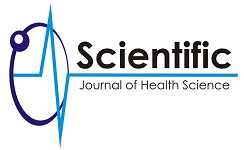|
Rakhmawati Riswandha1 | Ancah Caesarina Novi Marchianti 2 | Viphindrartin Sebastiana3 Abstract Program Indonesia Sehat (PIS) was a program from agenda of Nawa Cita, which aimed to improve quality of human life in Indonesia. The implementation of Program Indonesia Sehat through strategy of family approach, thus, it was determined 12 main indicators to value health status of a family. Program Indonesia Sehat has been implemented by empowering all potential, but there were still some problems that could not be avoided during the implementation in field, lack of resource, cost support, and commitment from stakeholders. Objective: To analyze performance surveillance of Program Indonesia Sehat in Puskesmas regional area of Jember District. Method: Quantitative research method and cross sectional approach. The sample of this research was taken from the health officers who have implemented PIS-PK in Jember District as many as 150 respondents. The method of data analysis was multiple linear regression. Finding: This research finding demonstrated the significant effect between input and process to the implementation of PIS-PK. Conclusion: The variables of input (man and materials) and process (actuating and controlling) were factors which affected to the implementation of PIS-PK program, therefore, it was suggested to the Office of Jember District to concern more on the indicators of either input or process as number of Human Resource, also facilities and infrastructures provision within the implementation of PIS-PK program. Keywords: Input, Process, PIS-PK |
UPDATES
- The Effectiveness of Bobath Exercises on the Ability to Walk and Leg Spasticity of Stroke Patients
- The Impact of Social Environment on the Prevention of Covid-19 in the Adolescents
- The Implementation of Balinese Culture-Based Occupational Activities is Improved Cognitive Elderly
- Development of Herbals as an Alternative for Worms (Theme: Determine the Optimization of Herbal Anthelmintic Power in Experimental Animals)
- Comparison of Organoleptic Aspects and Germs Between Healthy Broiler Chicken Meat with Raised Broiler Chicken Meat (Syringe Meat or Wet Meat)
- Performance Determinants of Village Midwives in Screening for Bad Nutrition
- The Effects of Lawrence Green Behavior Theory to the Anemia Incident on Pregnant Mother
- Public Perception of the Quality of Outpatient Services in Rsu Bhakti Husada Banyuwangi Regency by Servqual Method
- Nutrition Health Services of Child in Accreditation Primary Health Care of Banyuwangi Regency
- Adjustment of Phenytoin Dosage of Hypoalbuminemia Patients: A Review

